An eviction crisis is coming, housing lawyers warn
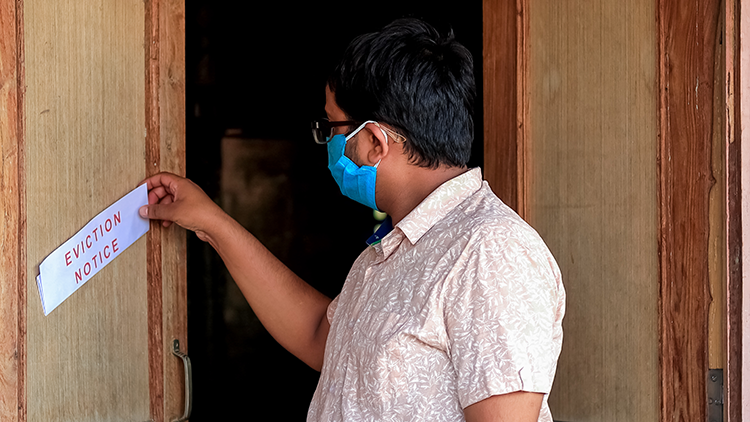
Images from Shutterstock.com.
Nearly six months into a pandemic that’s upended American society, a San Diego property owner cut a deal with a tenant: Take $10,000 and get out.
A 60-day eviction notice expired while the courts were closed, and the city’s new emergency restrictions gave the tenant significant leverage: His landlord couldn’t secure a court summons until Sept. 30 at the earliest, and in the meantime, the renter wasn’t legally required to pay him anything. The landlord’s lawyer, Rachael Callahan, told him the keys-for-cash deal was his best immediate option if he wanted to regain access to his property in a timely manner.
“The conversation I literally have 20 times a day is, I say: ‘This is where we are.’ The client says, ‘That’s unbelievable,’ and I agree with them,” says Callahan, who’s based in San Diego. “From our standpoint, not being able to help our clients is one of the most frustrating things we can face because we’re attorneys, and that’s what we’re supposed to do.”
In Houston, Kent K. Motamedi’s landlord clients for weeks were free to file evictions after encompassing Harris County didn’t impose its own eviction restrictions to replace the federal Coronavirus Aid, Relief and Economic Security Act or a statewide eviction moratorium that expired in May.
The new federal restrictions announced last week from the Centers for Disease Control and Prevention, coupled with a new order from the Texas Supreme Court, have slowed but not completely halted Motamedi’s work. Still, many are reluctant to pursue evictions “since most are under the impression that it is all but impossible to have an eviction granted, when really it has just prolonged the process if anything,” he says.
“All in all, the landlord-tenant disputes have become more difficult to handle, and more people are becoming frustrated, both from the perspective of tenants and landlords, due to these restrictions and/or loss of employment,” Motamedi says.
The evolving patchwork of pandemic-related policy that’s swept the United States housing market has left tenants and renters across the country in similar states of uncertainty as experts warn of a pending eviction crisis that will increase homelessness everywhere. Pandemic-related restrictions change frequently and sometimes differ greatly by jurisdictions, but the long-term effects of an eviction are largely universal: An eviction record can make it much more difficult to secure new housing.
“Eviction is an incredibly traumatizing event that affects every area of a family’s life and livelihood and well-being,” says Emily A. Benfer, director of the Health Justice Advocacy Clinic at Columbia Law School and chair of the American Bar Association’s COVID-19 Task Force Committee on Eviction.
The new federal order
The new federal order from the CDC, effective Sept. 4 through Dec. 31, prohibits payment-related evictions of tenants who declare—under penalty of perjury—an income of less than $99,000 for singles and $198,000 for couples, financial harm from COVID-19, and a susceptibility to homelessness or crowded shelters if evicted. They also must demonstrate they’ve sought governmental help paying rent.
The new restrictions were unveiled about a week after the CARES Act’s post-expiration waiting period expired, and they don’t apply to jurisdictions that have their own (at least equivalent) requirements, such as California.
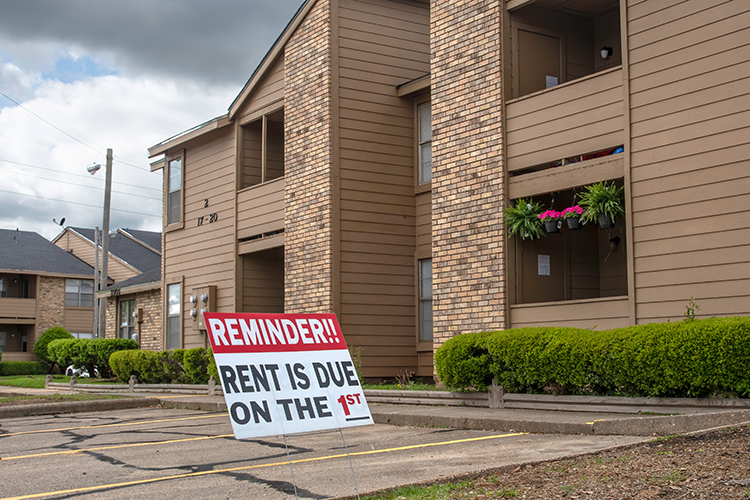 Despite the COVID-19 pandemic shutdown, in March a sign in the parking lot of an apartment complex in Bossier City, Louisiana, reminded renters: “Rent is due on the 1st.” Photo by Allen J.M. Smith / Shutterstock.com.
Despite the COVID-19 pandemic shutdown, in March a sign in the parking lot of an apartment complex in Bossier City, Louisiana, reminded renters: “Rent is due on the 1st.” Photo by Allen J.M. Smith / Shutterstock.com.Some jurisdictions, such as San Francisco, have had more stringent restrictions in place that remain in effect. Others including Texas and Alabama have expired, and in some states including Arkansas, Georgia and Oklahoma, the new federal order is the only protection available. And for some tenants early in the pandemic, “the only thing saving them from certain evictions was the fact that the court was closed,” says Ugochi L. Anaebere-Nicholson, directing attorney of the Public Law Center in Santa Ana, California.
Tenants have been rallying across the country, including in San Diego, where Patricia Mendoza, a single mother of two who’s lived in fear since losing her job, spoke in front of the downtown courthouse. She says she waited months to start receiving unemployment benefits, and her bills continued to mount.
“Millions of people in my shoes right now are living in fear, and it’s not right. … We need assistance; we need help,” Mendoza shouted through a megaphone during the Aug. 27 rally. “I need to help my children. If we get evicted, me and my children, we’re going to be camping out in one of these tents, and that’s not what I want.”
Rafael Bautista, co-director of the San Diego Tenants Union, says landlords are continuing to file evictions for other reasons. “They’re banking on the tenants not knowing their rights and then not having legal representation,” Bautista says.
A dormant eviction crisis
The individual stories represent a much larger problem, says Stacy Butler, director of the Innovation for Justice Program at the University of Arizona James E. Rogers College of Law.
“The truly terrifying story here is the magnitude of the impending eviction crisis—10 times our historic rate of eviction. People do not understand the ripple effect this eviction crisis is going to have. It is so much greater than individuals losing homes,” Butler says. “It is going to upend the housing market and devastate entire communities. Decision-makers need to be thinking about massive rent relief strategies.”
The new CDC order “is an immediate stopgap measure,” Butler adds.
“It does keep people housed during the pandemic, but tenants will continue to accrue late rent, fines and costs associated with failure to pay rent. When the moratorium is lifted, tenants will still be financially responsible for those accrued costs,” she says. “Eviction moratoriums need to be coupled with rental assistance and mortgage forbearance to stabilize the housing market. The CDC decision does not lessen pending evictions, it merely delays them.”
The CDC order allows for evictions for reasons other than lack of payment, which attorneys say can be easily abused.
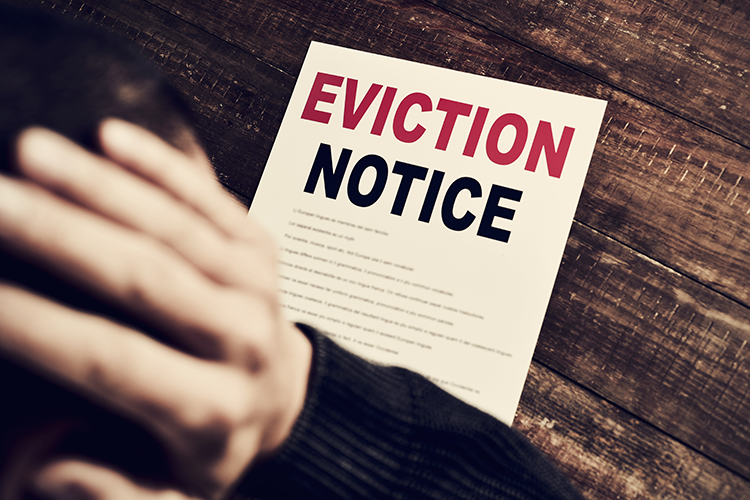
Anaebere-Nicholson says some tenants are enduring harassment at the hands of upset landlords. Other attorneys say they’ve heard of landlords posting falsified lockout orders to try to trick nonpaying tenants into leaving.
And tenant advocates appear to be taking an increasingly aggressive approach in their calls for widespread rent forgiveness: A video circulated on social media on Aug. 21 shows protesters blocking landlord attorney Wayne M. Abb from entering a Los Angeles County courthouse, where evictions aren’t being processed but can still be filed, while chanting, “Wayne go home.”
“I think that’s evidence of the extreme levels of desperation people are experiencing across the housing market,” Benfer says. “The problem here is that the federal government has yet to respond with any meaningful, robust legislation to address an entirely preventable crisis that we will be paying for well into the future.”
Benfer’s committee on eviction helped draft Resolution 10H, approved by the House of Delegates during the ABA Annual Meeting in August, urging federal, state and local governments to provide rental assistance and to prevent the use of COVID-19 eviction records in tenant screening practices. It’s also working to help mobilize the pro bono bar to defend tenants facing evictions during the pandemic.
Similarly, in a July letter, then-ABA President Judy Perry Martinez called on Congress to “prioritize housing stability and safety” as the expiration dates of protective programs loomed. “The pandemic has magnified and accelerated the housing crisis that already existed in the United States,” Martinez warned. “The steep decline in rent payments will have a devastating impact on the housing market, especially among small property owners who lack the financial ability to sustain short- and long-term nonpayment of rent.”
Martinez asked Congress to provide funds to assist the most vulnerable during the crisis and promoted S. 3030, a bill which would provide community housing courts specialized in housing matters to address issues on the ground.
In September, current ABA President Patricia Lee Refo renewed that July call on Congress to assist in the housing crisis, asking for rental and foreclosure relief, supplements to the Sept. 4 evictions moratorium from the CDC, and calling the moratorium “a temporary and incomplete remedy, as it does not include the federal rental assistance necessary to address the mounting rental debt and landlord expenses.”
The new CDC order means all the nation’s nearly 44 million rentals are protected, while the CARES Act only covered properties backed by federal mortgages, about 28% of them, according to the Urban Institute, an economic think tank in Washington, D.C. Other nonfederal-related rentals were covered by local restrictions that widely stopped evictions for lack of payment. Some states, such as California, went further and halted the processing of all evictions, except those to protect public health and safety. That included no-fault evictions, which Anaebere-Nicholson says stopped landlords from evicting nonpaying tenants once their leases expired.
But while courts halted the processing and serving of evictions, attorneys have continued to file them through the pandemic. And some states stopped processing evictions only for nonpayment, including Alabama. That moratorium expired May 1, ushering in “a big uptick,” says Farah Majid, managing attorney of Legal Services Alabama in Birmingham.
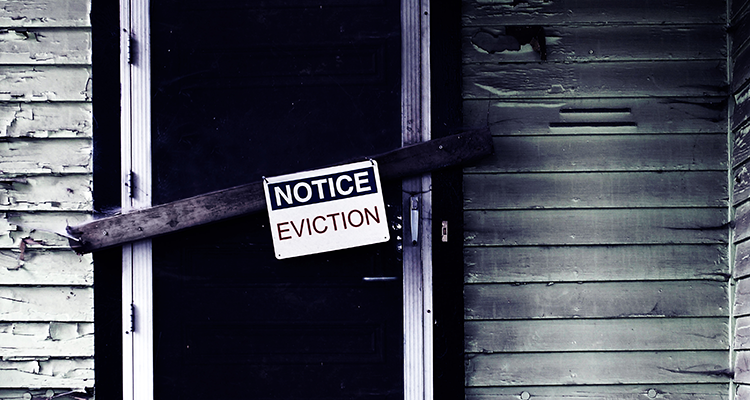
Majid’s staff helps clients navigate the court system, tries to ensure landlords are following the law and secures more time for negotiation and payment. But, Majid says, “A lot of times it’s money issues, and they just have the rent, and that’s unfortunately nothing we can do anything about.”
So far, the new CDC order hasn’t stopped evictions, and the landlords are “just trying to figure out any way around it.” Renters also must complete a government-provided declaration form, which Majid says “definitely presents an additional hurdle.”
Some see Alabama’s surge as a microcosm of a looming national crisis. But so far, many places haven’t seen the boom experts have warned of since March. Princeton University’s Eviction Lab is tracking pandemic-era evictions in 17 cities, and all but one —Milwaukee—saw fewer evictions than average in June and July. But those numbers don’t include tenants who decided “they’d rather leave than be subject to constant harassment to leave or constant pressure to make a rent payment that they just can’t make,” says Anaebere-Nicholson.
The decreases also occurred amid unprecedented restrictions, including the CARES Act. Once those ended, “the only thing really slowing [evictions] down, is just the physical capacity of the sheriff” to serve them, says Eric Dunn, director of litigation at the National Housing Law Project.
Other areas have seen increases similar to Alabama’s. Houston recorded 618 evictions in April, compared to a 2012-15 average for April of 3,876. But after the Texas Supreme Court allowed eviction proceedings to resume in May, Houston’s evictions increased to 2,483 in June and 2,252 in July. And that was when the CARES Act was still in place.
Some Texas counties imposed local eviction moratoriums after the statewide one ended. But Harris County didn’t, and Houston Mayor Sylvester Turner has declined to implement his own. Turner has, however, ordered a rental assistance program that’s to send $20 million to needy renters hurt by COVID-19. Houston landlords who accept the money can’t evict anyone on the property through September, even if there are multiple tenants on the lease who still aren’t paying.
The CARES Act funded $15 million, and Turner urged U.S. Congress to pump more money into the cause.
“Cities cannot do it alone,” Turner said at an Aug. 5 press conference.
Now Houston is subject to the new CDC order, though the rental assistance program will stay in place. In California, Gov. Gavin Newsom said last week the CDC order doesn’t apply there because a new state law is stronger. The legislature passed it Monday night, hours before courts were to begin processing evictions again after a near five-month delay.
The new California law has no qualifying income limit but requires renters pay 25% of due rent through Jan. 31. It prohibits any evictions based on unpaid rent that began in March 2020, but it allows landlords to sue tenants in small claims court to recover debt starting March 1, 2021. It also requires tenants to declare their pandemic-related financial hardship under penalty of perjury. The new law was a compromise between Gov. Newsom and stakeholders, and it built on a previous bill that garnered so much attention that hundreds of callers crashed a legislative phone line trying to comment.
Another bill proposes tax credits for landlords to compensate for unpaid rent. But that doesn’t immediately help owners who rely on cash-flow properties to pay other expenses.
Landlords bear a heavy burden
“People are pretty unhappy about the concept of tenants being able to live for free, and that’s not terribly surprising,” says Andrew M. Zacks of Zacks, Freedman & Patterson, in San Francisco.
Zacks currently is appealing a San Francisco County Superior Court judge’s upholding of a city ordinance passed in March that bans evictions and fees for nonpayment for six months after the state of the emergency ends. Tenants would still owe rent, but they can’t be evicted for not paying.
In Arizona, attorney Kory Langhofer of Statecraft represents real estate companies and advocacy groups, including the Arizona Multihousing Association, in a state supreme court petition challenging the statewide moratorium. Like Zacks, he’s arguing the law amounts to a public taking of his clients’ property.
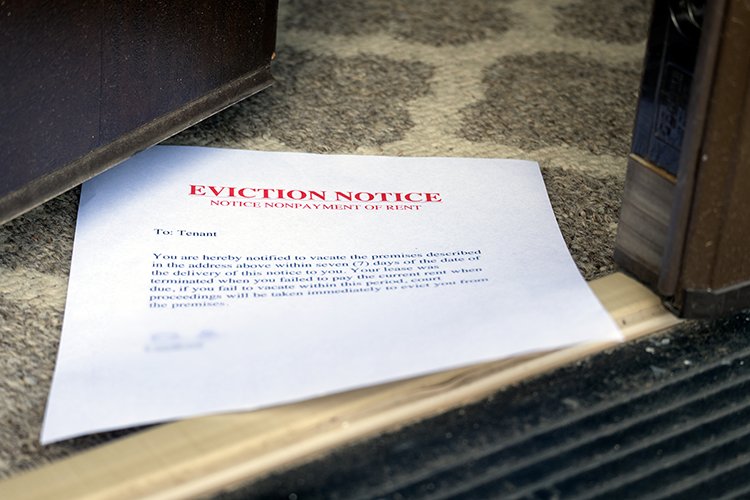
A similar lawsuit that’s challenging Los Angeles’s restrictions is proceeding in the U.S. District Court. Daniel M. Bornstein, a real estate attorney in San Francisco, says his landlord clients feel as though “the heavy lifting has been borne by one class of individuals at the expense of others.”
The problem includes student housing and extends to large-scale commercial leases, says Jason M. Stone of Stone & Sallus in Manhattan Beach, California.
Stone says one of his clients who owns property near the Staples Center is trying to negotiate leases with restaurants and other businesses demolished by the pandemic. Another owns property leased by a 24-hour gym that’s filed for bankruptcy. The gym gave its landlord a take-it-or-leave-it deal: 33% of what’s owed, “or get in line in bankruptcy court,” Stone says.
“It’s an impossible situation, and because of the timing and court delays, clients are really put in a tough spot,” Stone adds. “How do you negotiate when you don’t know what’s going to happen in three months, let alone three years?”
Still, Stone says many of his clients “are pleasantly surprised that they’re collecting more rent than they anticipated.”
“It’s the landlords and tenants that are communicating,” Stone says. “That’s what’s going to lead to much better results.”
Callahan says the $10,000 keys-for-cash deal a client recently brokered would have been inconceivable months ago.
“I think owners just want to feel that not everything is on them,” Callahan says. “I understand from the standpoint of people trying to fix it that they also don’t have a lot of options. But the reality is, they’ve had six months.”
Benfer, who is working with Princeton’s Eviction Lab, says a national rental assistance program must be created to help not only renters, but also landlords.
“The sustained nonpayment of rent results in a cascade of negative repercussions of property owners as well as communities,” she says. “All of this ends up increasing societal costs that are dispersed through the community and placed on all of our shoulders.”
Dunn agrees. “That’s one area where I think landlords and tenants are really aligned,” he says. “They both need a relief package for rent.”
Meghann Cuniff is a journalist based in California who’s reported for the Washington Post, the Orange County Register, the Los Angeles Daily Journal, the Idaho Statesman and the Spokesman-Review. She earned a bachelor’s degree in political science and journalism from the University of Oregon. Follow Cuniff on Twitter at @meghanncuniff.



